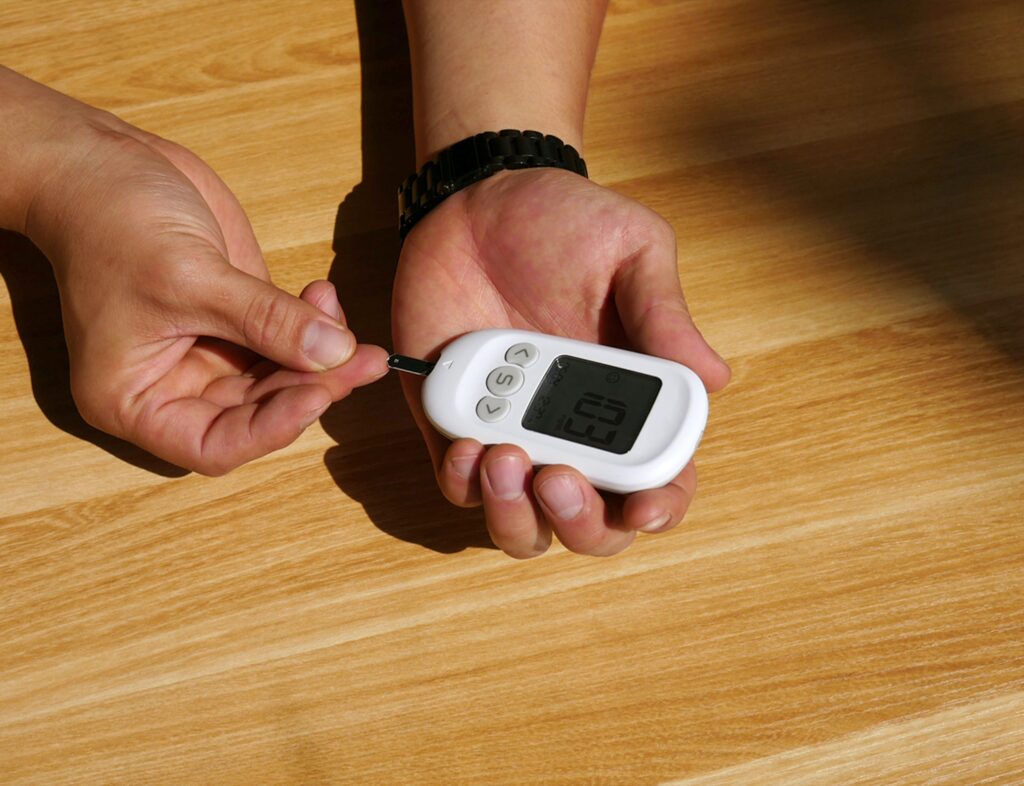Introduction
In the quest for better metabolic health, the dynamic interplay between exercise and insulin sensitivity emerges as a powerful partnership. This blog post will explore the pivotal role of physical activity in enhancing insulin sensitivity, reducing the risk of insulin resistance, and ultimately promoting overall well-being.
Understanding Insulin Sensitivity: A Brief Overview
Insulin sensitivity lies at the core of metabolic health, acting as a critical determinant of how effectively our bodies manage blood sugar levels. Before we delve into the transformative relationship between exercise and insulin sensitivity, let’s take a moment to revisit the fundamental concepts surrounding insulin sensitivity.

The Role of Insulin:
- Insulin’s Crucial Role: Insulin is a hormone produced by the pancreas with a primary mission—to regulate glucose (sugar) levels in the bloodstream. When we consume food, especially those rich in carbohydrates, our digestive system breaks down these carbohydrates into glucose. In response to rising blood sugar levels, the pancreas releases insulin into the bloodstream.
- Facilitating Glucose Uptake: Insulin acts as a key that unlocks the doors of our cells, allowing glucose to enter. Once inside the cells, glucose is either used for immediate energy or stored for later use. This process is vital for maintaining stable blood sugar levels and ensuring that cells receive the energy they need to function optimally.
Insulin Sensitivity Defined:
- Responsive Cells: Insulin sensitivity refers to the degree to which cells in the body respond to insulin. In individuals with high insulin sensitivity, cells readily and efficiently absorb glucose in response to insulin signals.
- Efficient Blood Sugar Regulation: Imagine insulin sensitivity as a finely tuned orchestra, where the conductor (insulin) and the musicians (cells) work in harmony. In this scenario, glucose absorption is smooth, blood sugar levels are well-regulated, and the entire system functions optimally.
Insulin Resistance and Its Implications:
- The Precursor to Trouble: On the flip side, when insulin sensitivity diminishes, a condition known as insulin resistance emerges. In insulin resistance, cells become less responsive to insulin’s signals, hindering the efficient absorption of glucose.
- Escalating Risks: As insulin resistance progresses, the pancreas compensates by producing more insulin, leading to elevated insulin levels in the bloodstream. This compensatory mechanism, however, may not be sustainable. Over time, it can result in persistently elevated blood sugar levels, contributing to the development of type 2 diabetes and metabolic syndrome.
The Consequence of Diminished Insulin Sensitivity:
Insulin resistance creates a metabolic disarray, characterized by elevated blood sugar levels, increased fat storage, and an imbalance in various metabolic processes. This sets the stage for a cascade of health issues, including cardiovascular diseases, obesity, and other complications associated with metabolic syndrome.
The Importance of Maintaining Insulin Sensitivity:
Preserving and enhancing insulin sensitivity is foundational for overall health. It not only guards against the development of type 2 diabetes and metabolic syndrome but also plays a crucial role in weight management, energy regulation, and long-term well-being.
The Exercise-Insulin Sensitivity Connection: Unraveling the Mechanisms
Physical activity emerges as a potent catalyst in the intricate relationship between exercise and insulin sensitivity. By exploring the mechanisms underlying this connection, we can better appreciate how engaging in regular exercise becomes a powerful tool for managing blood sugar levels and promoting overall metabolic health.
1. Muscle Contractions and Glucose Uptake:
- Dynamic Duo: Engaging in physical activity sets in motion a remarkable collaboration between muscle contractions and glucose uptake. As you move, your muscles contract, creating a demand for energy. In response to this demand, muscle cells become highly receptive to glucose. Importantly, this process operates independently of insulin, making exercise a unique and effective strategy for managing blood sugar levels.
- Key Takeaway: The symbiotic relationship between muscle contractions and glucose uptake during exercise bypasses the traditional insulin-dependent pathway, offering a direct and immediate way to enhance cellular energy utilization.
2. Mitochondrial Adaptations:
- Powerhouses of Cells: Within our cells, mitochondria stand as the powerhouses responsible for energy production. Regular exercise induces adaptations in these cellular powerhouses, optimizing their efficiency. This adaptation is particularly impactful for insulin sensitivity, as the enhanced ability of mitochondria to utilize glucose for energy contributes to improved overall metabolic function.
- Key Takeaway: Mitochondrial adaptations induced by exercise create an environment where glucose is efficiently converted into energy, reducing the likelihood of insulin resistance and supporting stable blood sugar regulation.
3. Inflammatory Modulation:
- Anti-Inflammatory Effects: Chronic inflammation is a well-established contributor to insulin resistance. Exercise, however, acts as a natural anti-inflammatory agent. It reduces the levels of inflammatory markers in the body, mitigating the negative impact of inflammation on insulin signaling. By fostering an anti-inflammatory environment, exercise plays a crucial role in preserving insulin sensitivity.
- Key Takeaway: Exercise serves as a dual-purpose strategy by not only directly impacting insulin sensitivity but also addressing the underlying inflammatory factors that contribute to insulin resistance.
4. Fat Metabolism and Insulin Sensitivity:
- Burning Fat Efficiently: Exercise promotes an efficient metabolism of fats, influencing the delicate balance between fat storage and utilization. As you engage in physical activity, your body becomes adept at utilizing stored fat for energy. This process is pivotal for insulin sensitivity, as it helps prevent the accumulation of fat in tissues, a factor that can contribute to insulin resistance.
- Key Takeaway: By promoting effective fat metabolism, exercise contributes to a healthier metabolic profile, reducing the risk of insulin resistance and fostering a more balanced energy utilization within the body.
Choosing the Right Exercise Regimen for Insulin Sensitivity
Understanding the mechanisms behind the exercise-insulin sensitivity connection paves the way for strategic choices in physical activity. Let’s explore the types of exercises that offer maximum benefits for insulin sensitivity and create a comprehensive approach to metabolic health.

1. Aerobic Exercise: Cardiovascular Health
Benefits:
Improved Cardiovascular Health: Aerobic exercises such as brisk walking, running, cycling, and swimming elevate heart rate and enhance cardiovascular function. These activities stimulate blood flow, promoting efficient oxygen and nutrient delivery throughout the body.
Impact on Insulin Sensitivity:
Enhanced Insulin Sensitivity: Regular engagement in aerobic exercises has been linked to improved insulin sensitivity. As these activities increase the demand for energy, muscle cells become more responsive to insulin, facilitating efficient glucose uptake.
Practical Tips:
- Start Slowly and Progress Gradually: Begin with activities like brisk walking and gradually progress to more intense aerobic exercises to build stamina and cardiovascular endurance.
- Consistency is Key: Aim for at least 150 minutes of moderate-intensity aerobic exercise per week, spread across multiple days.
2. Resistance Training: Building Strength
Benefits:
Resistance training, which includes activities like weightlifting, resistance band exercises, and bodyweight exercises, targets muscle groups, leading to an increase in muscle mass and strength.
Impact on Insulin Sensitivity:
Building and maintaining muscle mass is integral to insulin sensitivity. Resistance training enhances the capacity of muscle cells to absorb glucose, contributing to improved insulin sensitivity.
Practical Tips:
- Include Major Muscle Groups: Design a resistance training routine that targets major muscle groups, including legs, arms, back, and core.
- Progressive Overload: Gradually increase the resistance or intensity of exercises to continue challenging your muscles and promoting strength development.
3. Combination of Both: Comprehensive Approach
Benefits:
Combining aerobic exercises with resistance training provides a well-rounded approach to fitness, offering a wide range of health benefits beyond insulin sensitivity.
Impact on Insulin Sensitivity:
The combination of both aerobic and resistance exercises creates a synergistic effect on insulin sensitivity. Aerobic activities enhance cardiovascular health, while resistance training promotes muscle strength and mass, collectively contributing to optimal metabolic function.
Practical Tips:
- Create a Balanced Routine: Aim for a balanced exercise routine that includes both aerobic and resistance training elements.
- Include Flexibility and Mobility Exercises: Incorporate activities like stretching and yoga to enhance flexibility and promote overall joint health.
Practical Tips for Incorporating Exercise into Daily Life
1. Start Small and Build Gradually:
Begin with activities you enjoy and gradually increase intensity and duration. Consistency is key for long-term benefits.
2. Find Activities You Love:
Whether it’s dancing, hiking, or playing a sport, finding enjoyable activities makes it more likely that you’ll stick to your exercise routine.
3. Include Both Cardio and Strength Training:
Incorporate a mix of aerobic and resistance exercises for a well-rounded approach to fitness.
Conclusion
In the intricate dance between exercise and insulin sensitivity, every step counts. Engaging in regular physical activity not only reduces the risk of insulin resistance but also brings a multitude of health benefits, from improved cardiovascular health to enhanced mental well-being. As you lace up your sneakers or roll out your yoga mat, remember that each movement is a step toward a healthier, more insulin-sensitive you. Embrace the power of this dynamic duo and let the journey toward optimal metabolic health begin.